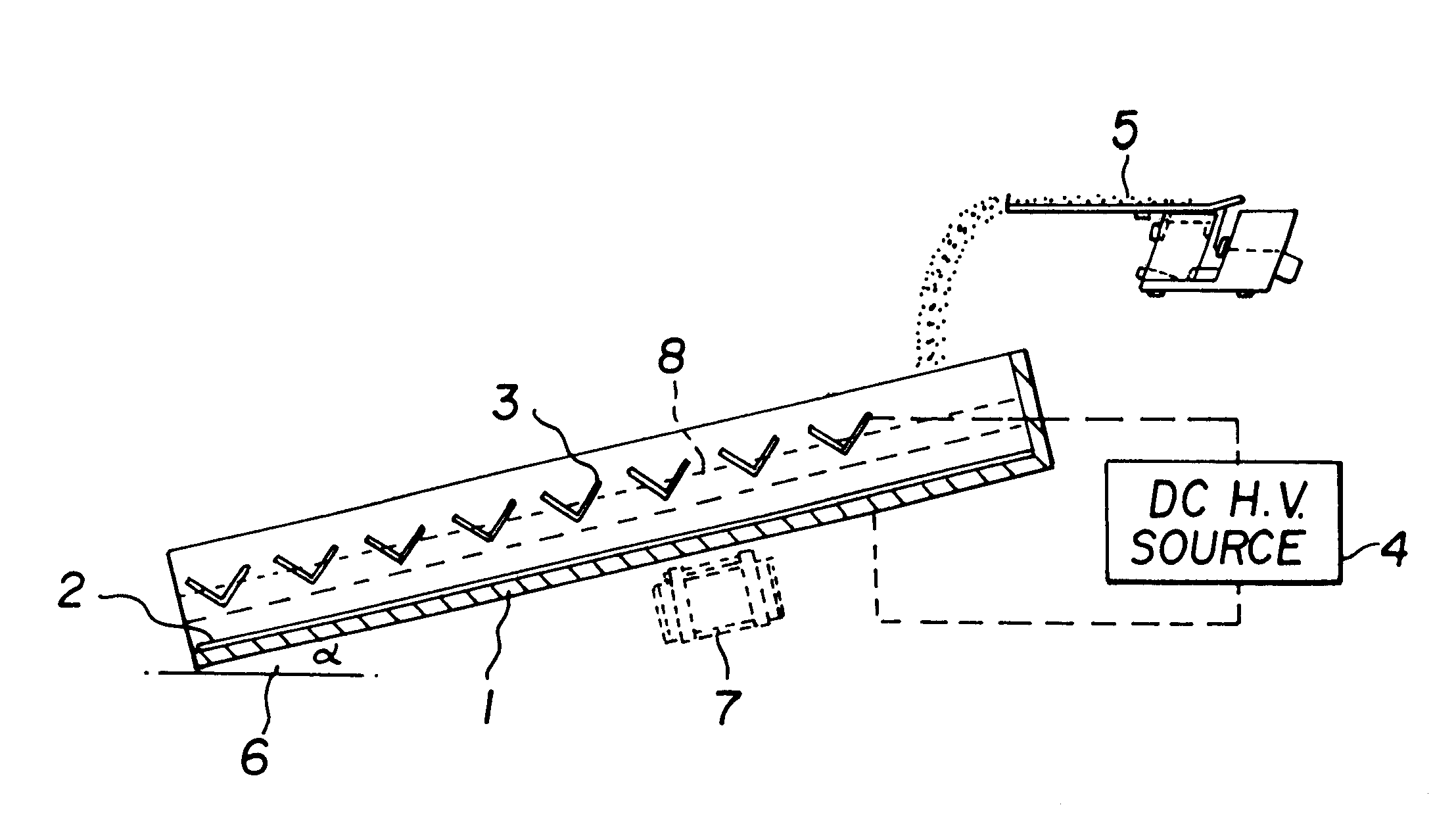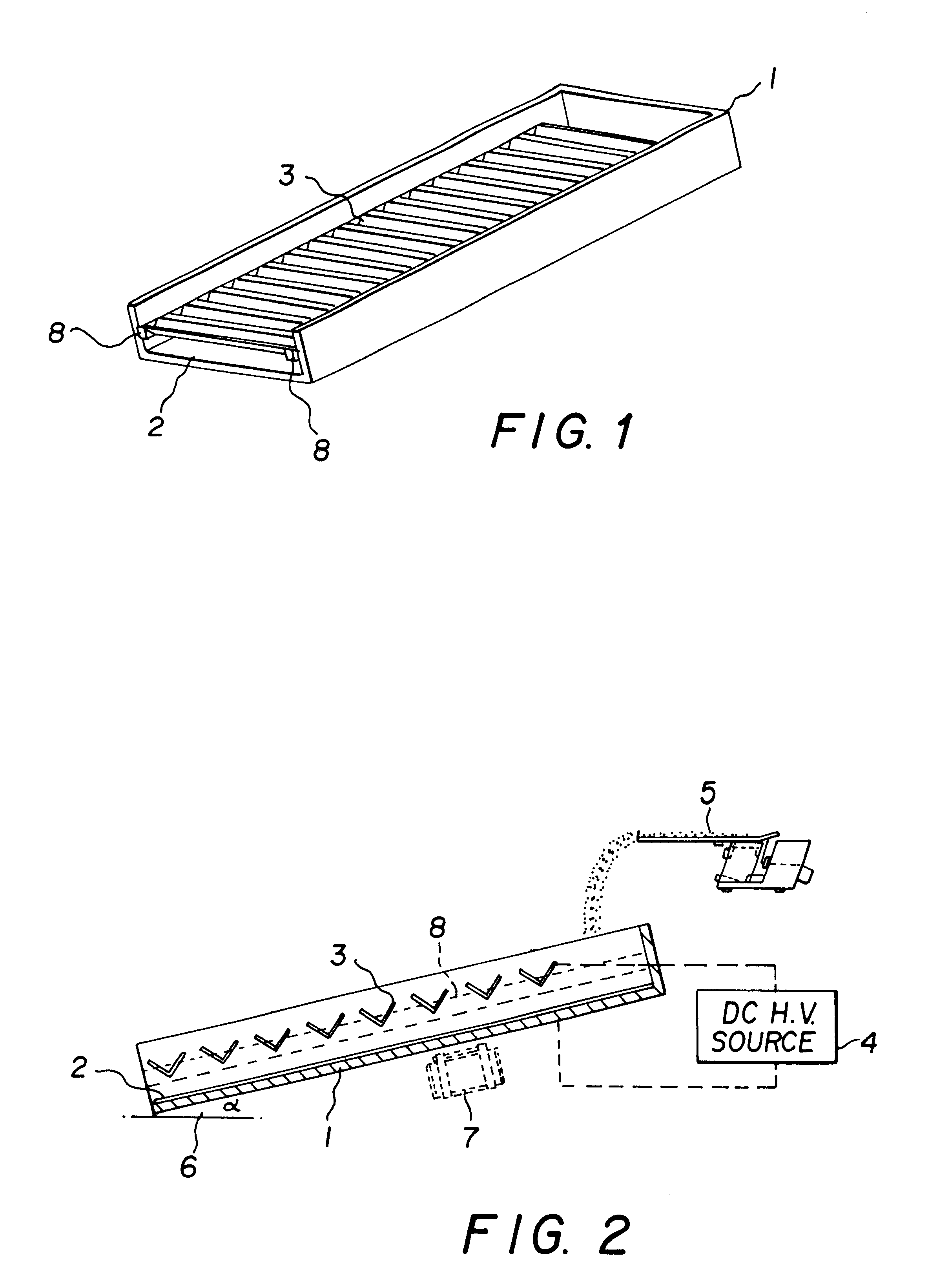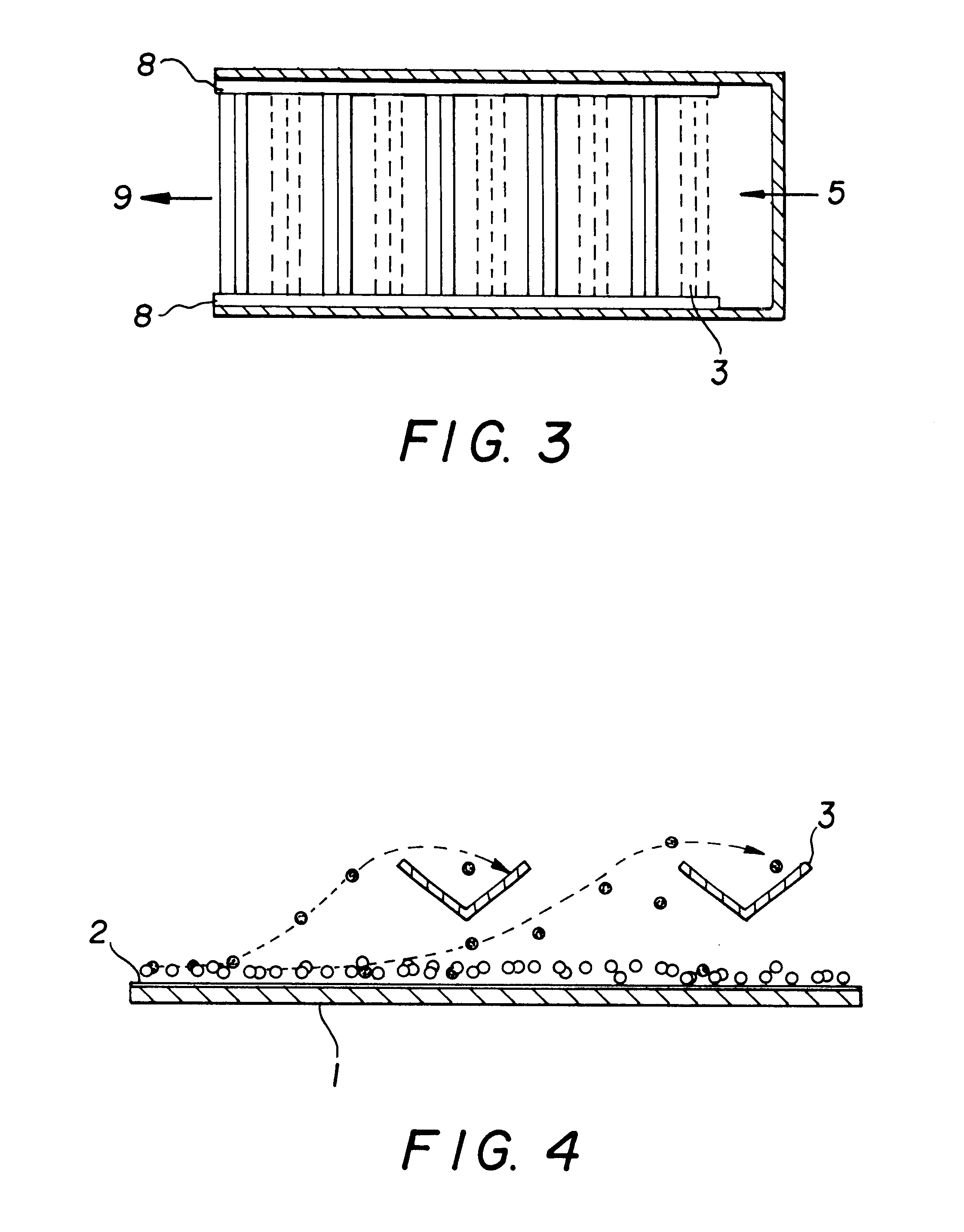Electrostatic method of separating particulate materials
a technology of particulate materials and electric current, which is applied in the field of electric current separation of particulate materials, can solve the problems of affecting the reactivity of pozzolan, the amount of unburned carbon left, and the consumption of unburned carbons in fly ash, so as to facilitate the flow of materials and maximize the transfer of electrons
- Summary
- Abstract
- Description
- Claims
- Application Information
AI Technical Summary
Benefits of technology
Problems solved by technology
Method used
Image
Examples
example 1
In this example, the electrostatic separator developed in the present invention was tested for removing unburned carbon from fly ash. Since carbon is a conductor, it should be charged by conduction and be removed from fly ash. The test sample was received from Korea Fly Ash and Cement Company. It was dry-screened at 200 mesh, and the screen overflow, assaying 26.6% LOI, was used as feed. The tests were conducted by changing the slope of the plate electrode, which determines throughput. Each test was conducted using a 100-g sample. All tests were conducted with the bottom electrode polarized netatively and with the collection troughs above positively. A potential difference of 30 KV was applied between the two electrodes. Under this condition carbon particles were negatively charged and jumped out of the flowing film of fly ash. Since the length of the table used in the tests was short, it was necessary to pass a given sample several times through the separator to obtain a desired LO...
example 2
In this example, the +200 mesh fly ash sample that was used in Example 1 was cleaned by changing the polarities of the electrodes. In one test, the bottom plate was polarized negatively, and in another it was polarized positively. In both tests, the potential difference was set at 30 KV. As shown in Table 2, unburned carbons were removed substantially only when the bottom electrode was polarized negatively. The poor results obtained when the bottom electrode was polarized positively is not clear.
example 3
In this example, the +200 mesh fly ash sample was cleaned five times at 30 KV with the bottom electrode polarized negatively. The results are given in Table 3. It shows that the separation efficiency increased as the number of cleaning stages was increased. This observation may be explained as follows. Although carbon is a condutor, conductivity of the unburned carbon particles present in fly ash may be relativly low. The most likely reason for the low conductivity may be that the surface of the carbon particles may have been oxidized during the process of incomplete combustion in the furnace. The low conductivity may require that unburned carbon particles have multiple contacts with the bottom electrode before they can be sufficiently charged. Nevertheless, the LOI was reduced from 26.2 to 1.3% at a 65.9% recovery after five passes. The recovery can be increased if the rejects are reprocessed.
PUM
| Property | Measurement | Unit |
|---|---|---|
| angle | aaaaa | aaaaa |
| angle | aaaaa | aaaaa |
| electric field | aaaaa | aaaaa |
Abstract
Description
Claims
Application Information
 Login to View More
Login to View More - R&D
- Intellectual Property
- Life Sciences
- Materials
- Tech Scout
- Unparalleled Data Quality
- Higher Quality Content
- 60% Fewer Hallucinations
Browse by: Latest US Patents, China's latest patents, Technical Efficacy Thesaurus, Application Domain, Technology Topic, Popular Technical Reports.
© 2025 PatSnap. All rights reserved.Legal|Privacy policy|Modern Slavery Act Transparency Statement|Sitemap|About US| Contact US: help@patsnap.com



